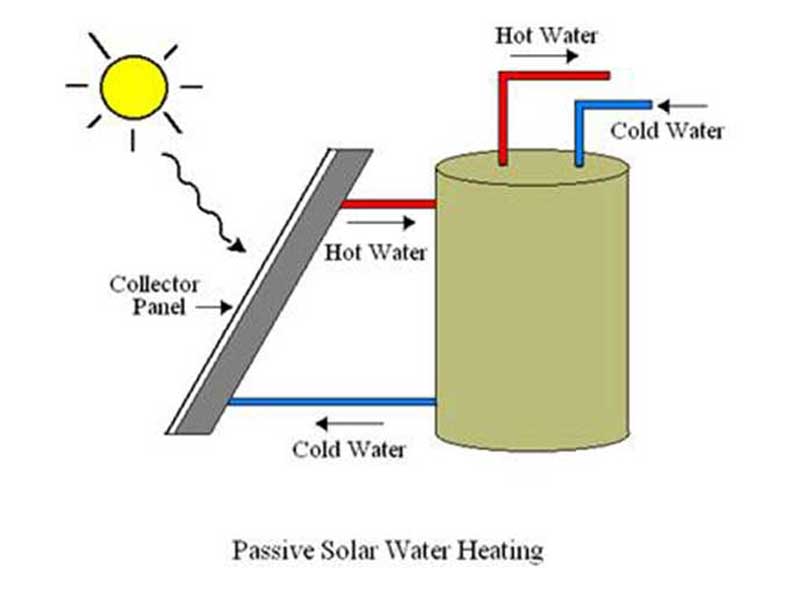How solar geyser systems work
A solar geyser, often referred to as a solar water heater or solar hot water system, is a device that uses energy from the sun to heat water for various domestic and industrial purposes, such as bathing, cleaning, and space heating. Solar geysers are an environmentally friendly and energy-efficient alternative to traditional water heaters that rely on electricity or gas to heat water.
Here’s how a solar geyser works:
- Solar Collectors: The key component of a solar geyser system is the solar collector, which is usually mounted on the roof or in an area with good exposure to sunlight. Solar collectors come in different types, with the two most common types being flat-plate collectors and evacuated tube collectors. These collectors are designed to absorb sunlight and convert it into heat.
- Heat Transfer Fluid: Inside the solar collector, a heat transfer fluid (usually a mixture of water and antifreeze) circulates through pipes or tubes. As the fluid passes through the collector, it absorbs heat from the sun’s energy, raising its temperature.
- Heat Exchanger: The heat transfer fluid carrying the absorbed solar heat is then pumped or naturally circulated to a heat exchanger within a storage tank. The heat exchanger is a coil or set of pipes immersed in the water to be heated.
- Water Heating: As the hot heat transfer fluid flows through the coil or pipes in the heat exchanger, it transfers its heat to the water in the storage tank. This process raises the temperature of the water, making it suitable for various domestic purposes.
- Temperature Control: Solar geyser systems often include temperature controls to ensure that the water in the storage tank does not become too hot or too cold. A thermostat may be used to monitor the water temperature and activate a backup heating source (such as an electric element or gas burner) if necessary, especially during periods of low sunlight or high demand for hot water.
- Storage Tank: The heated water is stored in an insulated storage tank until it is needed. The storage tank is well insulated to minimize heat loss and keep the water hot for an extended period.
- Distribution: The hot water from the solar geyser storage tank can be distributed to various fixtures and appliances in the building, such as showers, sinks, and washing machines, for use in domestic activities.
The advantages of solar geysers include reduced energy bills, lower greenhouse gas emissions, and reduced reliance on fossil fuels for water heating. They are particularly effective in regions with abundant sunlight. However, their performance can be affected by factors like weather conditions, seasonal variations, and the quality of the solar collectors and system components. Proper maintenance and sizing are essential to ensure optimal performance and efficiency.



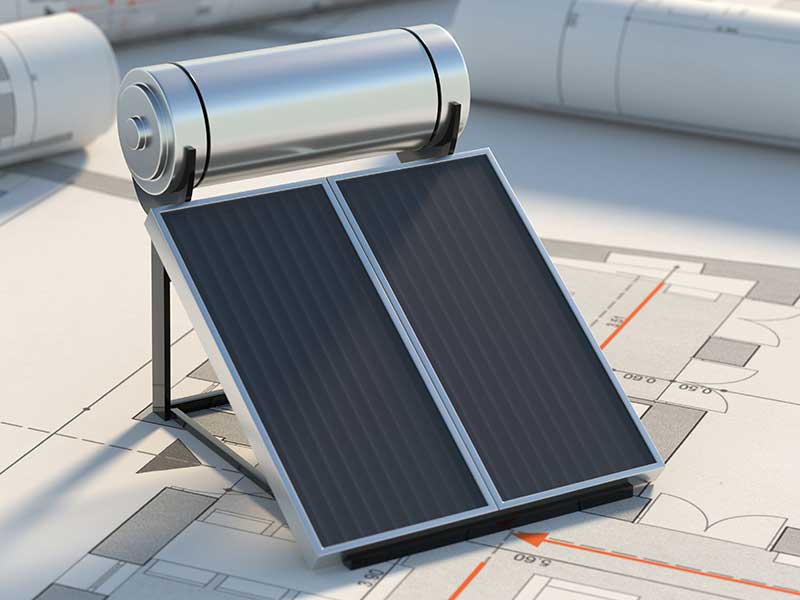
Save with a solar geyser
South Africa is a very sunny country and solar thermal panels hugely benefit from this factor. However, some parts around the country can get very cold during winter times. But apart from the cold, solar geysers or solar thermal hot water collectors, can still produce enough hot water for your home. Thus, you will still be saving great amounts on your electrical bills with a solar geyser. Most solar geyser systems can produce up to 90% of your hot water. Therefore, allowing the solar geyser system to pay for itself in about 10 years, just from the savings made.

How to build a solar geyser system
In the most basic form, you can create your own solar water heater system at your home. Although, water can take a long time to heat up by using the sun. However, water has a good and high heat capacity and that is why water or liquid is used to transfer thermal energy. So, how can you construct a solar geyser system by yourself by the means of only using water?
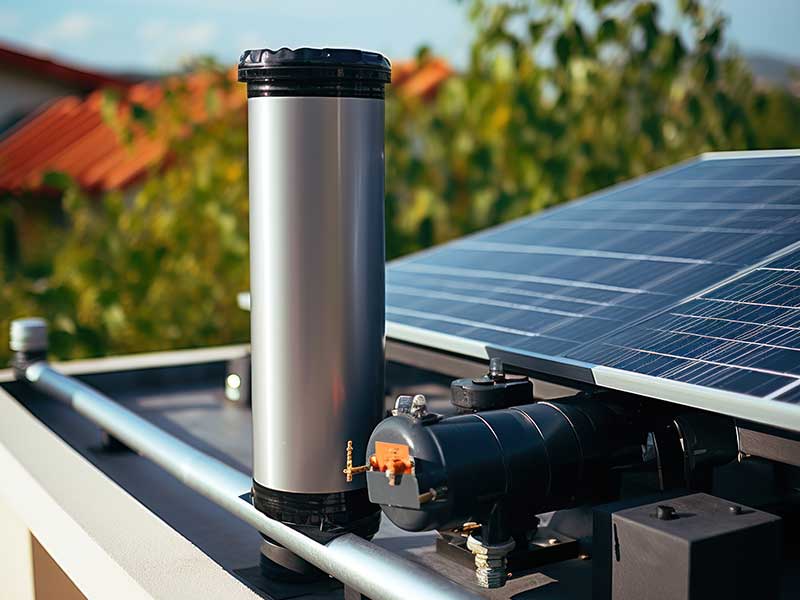
Simple solar thermal example
This is just a simple example which aims to also explain how a solar geyser system works. If you take a plastic or glass bottle filled with water, leave it in the sun for a long period, the water will be warm as time passed. But, there’s a problem with this scenario. A jar of water won’t provide your home with sufficient hot water. You can use hundreds of water jars to generate hot water through solar thermal energy. But this will also be an impractical solar thermal solution. Another way is if you take the water bottle and use it as a solar thermal collector by making a hole at the top and bottle of the bottle and connect pipes to each end. Connect the pipes to the houses hot water storage tank to create a water circuit. A pump can now be fitted somewhere in the system to circulate the water. As the sun produces solar energy and the thermal energy gets trapped inside the bottle, the water in the storage tank will heat up as time goes by. However, water bottles are not a real solution as they can’t trap enough solar heat as solar geyser systems can. But, in theory, you just created a solar hot water heating system.
Solar Geyser system components


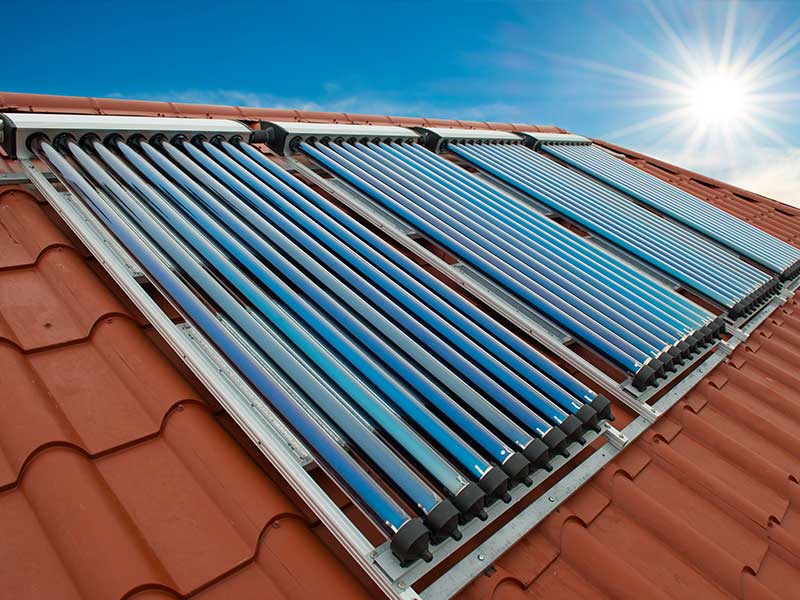
Solar collectors
A solar collector is also known as a flat panel which is usually black in colour. This panel black solar collector panel usually gets installed on a roof. In South Africa, we receive lots of sunlight, therefore, many people can install a smaller sized solar collector. In colder areas and people living in large homes, will usually require a larger solar collector installed on their roofs. A solar collector needs to be installed on a roof that does not have shading, ensuring the sun can reach the collector without obstructions. There are two types of solar collectors used for solar geyser systems. A common type of collector is known as a solar flat panel or flat plate collector and also evacuated solar tube collector.


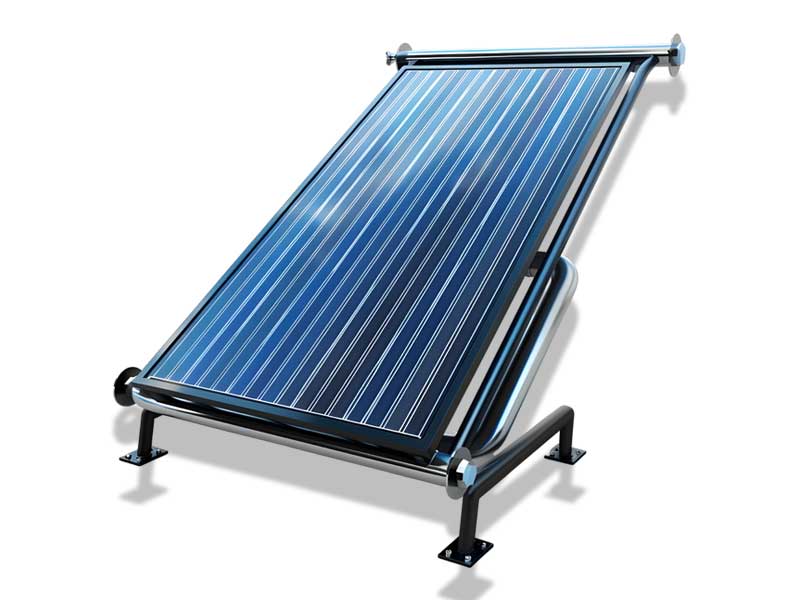
Solar flat-plate collectors
Also commonly known as flat panel collectors, are one of the simplest types of solar collectors on the market in South Africa. A solar flat plate collector is connected to water pipes which goes through the collector which is coated with a thick black glass. The glass on the flat panel absorbs the sunlight and traps the thermal energy inside. This is much like a greenhouse effect. The water inside the pipes connected to the flat plate collector, transfer the heat to the hot water storage tank.


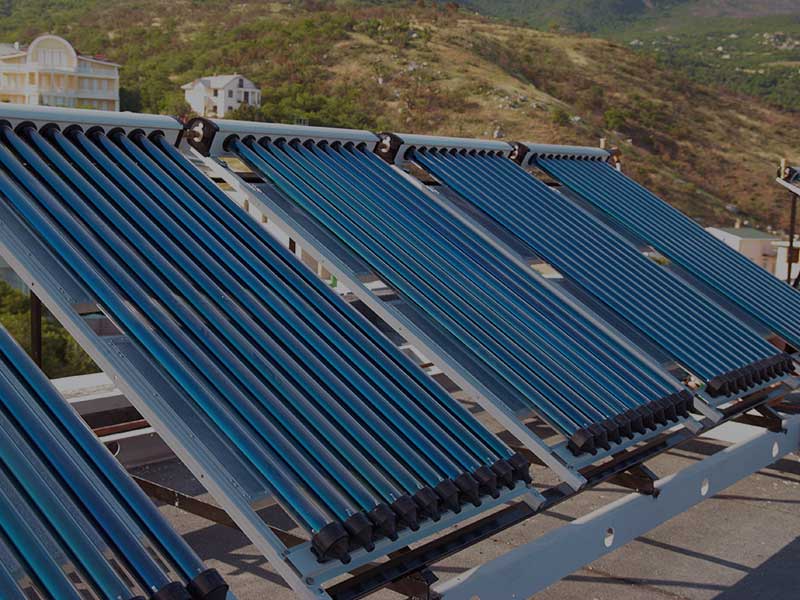
Evacuated tube solar collector
Evacuated tube solar collectors could look like a bunch of pipes or tubes connected to a metal frame. It goes beyond that. Evacuated solar tube collectors are a very efficient type of solar collector because each tube work almost the same as a vacuum flask. All the tubes are empty or evacuated, however, they collect the sun’s heat and also effectively traps the thermal energy inside. The trapped heat is transferred to the manifold which is usually at the top of the evacuated tubes. In the manifold, heat transfer liquid or fluid, heats up and transfers the heat to the hot water storage tank. What makes evacuated tube collectors more efficient? Heat does not escape as easily from evacuated solar tube collectors, unlike flat panel collectors. The only downside about evacuated tube collectors are, flat panel collectors are much more affordable than these evacuated tube collectors.


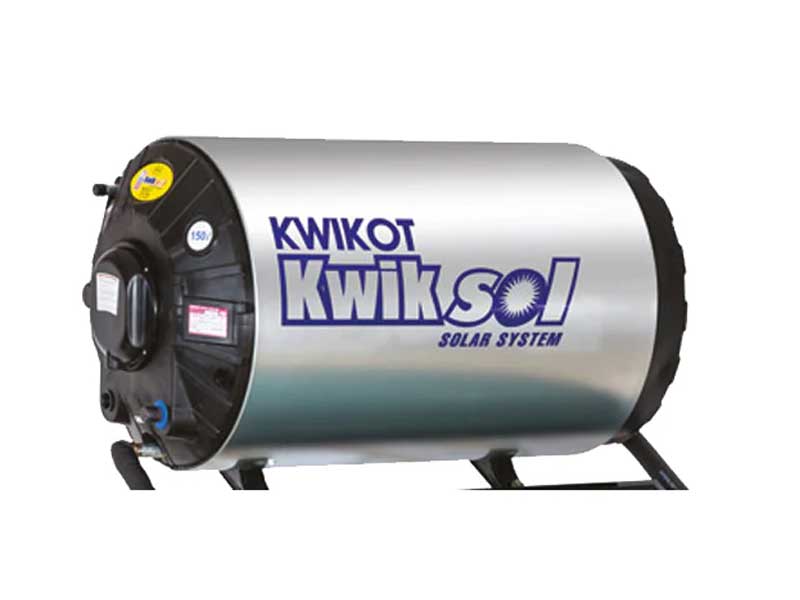
Hot water storage tank
Collecting heat from the sun for hot water is amazing, but you will need some place to store all this heated water. If you already have an electrical geyser in your home, a solar geyser conversion can be implemented which will use your current electrical geyser as a storage tank for hot water. Also, you can have an electrical backup element which will allow you to fall back on electricity if you really require it. This is mostly at times when you receive guests at your home and you need to accommodate everyone with hot baths or showers. However, if you don’t have any water storage tank or geyser installed at your home, you will need to install an additional storage tank. The most common hot water storage tanks for solar geysers are 150 Liters and 200 Liters.


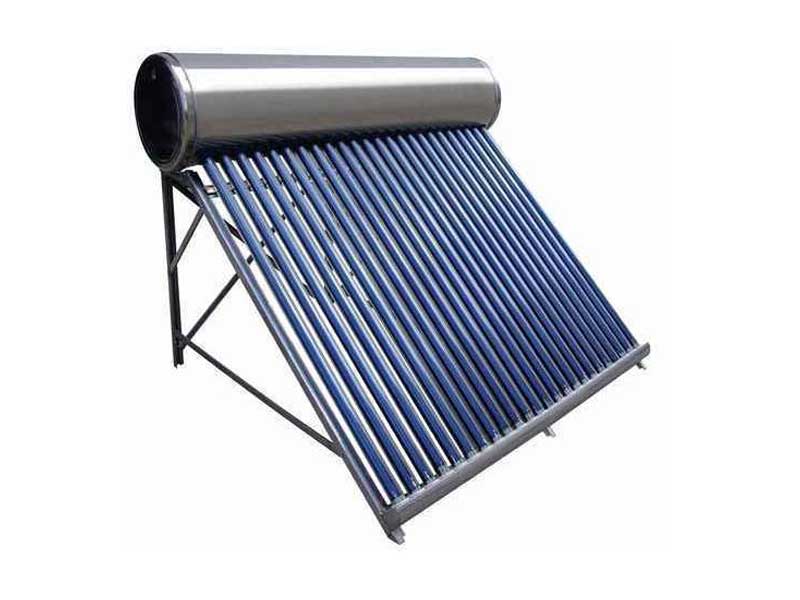
Integrated Solar Collector-Storage systems
Water is usually heated in evacuated solar tubes inside an insulated box and is stored until it gets used. If the hot water is not used over a period, it will remain hot but also, the water temperature will keep rising as it receives thermal radiation. Using a tampering valve, you protect yourself from the very hot water when using your faucets. A tampering valve allows for the mixing of cold water with the very hot water, to decrease the temperature of the water you receive at the faucet. Integrated Collector-Storage systems is not a recommended solar geyser solution if you’re living in a very cold environment.


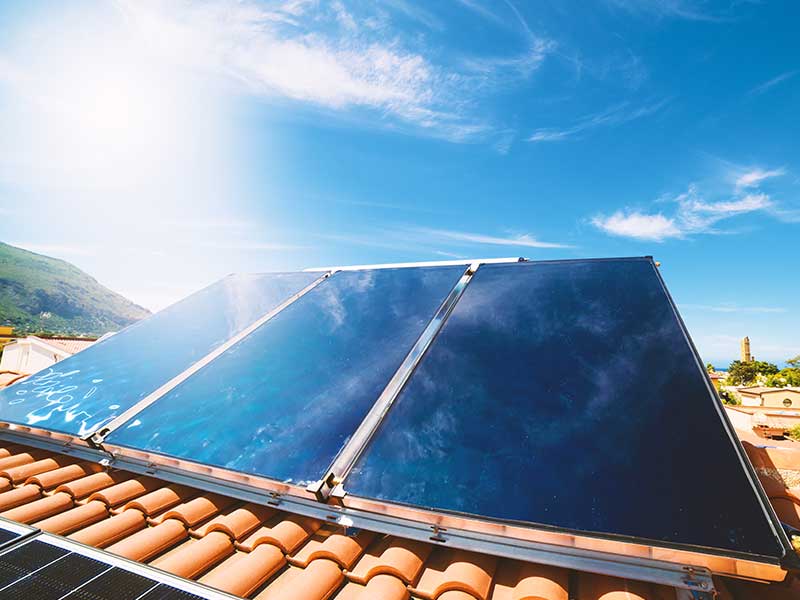
Flat panel solar collectors
Flat panel solar collectors are constructed by copper tubes placed within flat absorbing plates. Usually, there will be a series of parallel tubes connected at each end of the flat panel by two pipes. One pipe is for the inlet and the other the outlet manifolds. All the components which makes up a flat panel solar collector, is fitted inside an insulated box which is covered by thick and dark tempered glass. By using two flat panel collectors, you can provide enough hot water suitable for 4 people in a home.


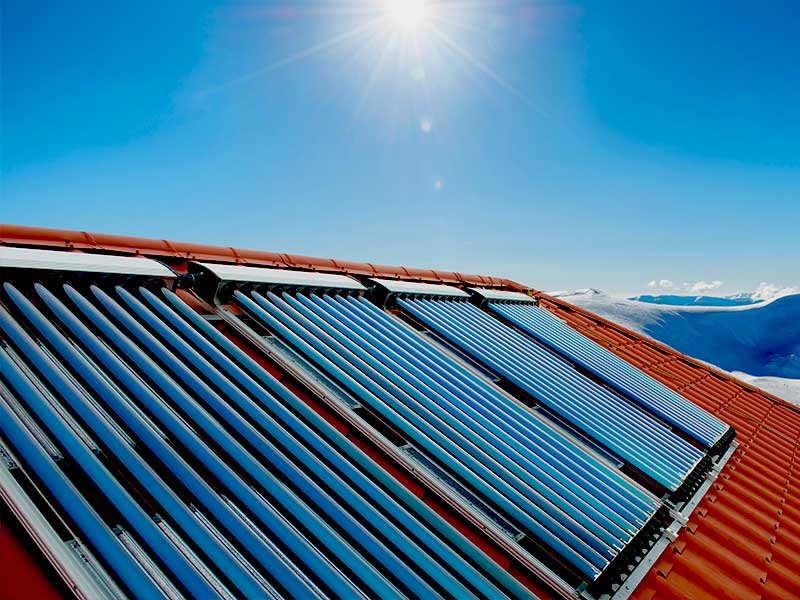
Solar evacuated tube collectors
Solar evacuated tube collectors are one of the best and efficient solar collectors available in South Africa. Solar evacuated tube collectors consist of glass or metal tubes which contains water or heat transfer fluids and are surrounded by another bigger glass tube. The area between the tubes, are known as a vacuum. Therefore, preventing thermal energy or heat, to escape. Solar evacuated tube collectors can produce hot water although it might be cloudy. Also, they can function in temperatures as low as 4 degrees Celsius. However, Solar evacuated tube collectors might come at a higher price tag. We still recommend them as a solar conversion or investment due to their efficiencies or producing hot water.

Indirect solar geyser systems
Uses an anti-freeze type of liquid to transfer the heat generated from the sun into the storage tank. The fluid receives their heat in the form of thermal energy which is directly obtained from the sun. The heated fluid flows to the heat exchanger where it transfers heat to the water. If the transfer is complete, the heat transfer fluid gets circulated to return to the solar collector. However, the heat transfer fluid never makes contact directly with the storage water.
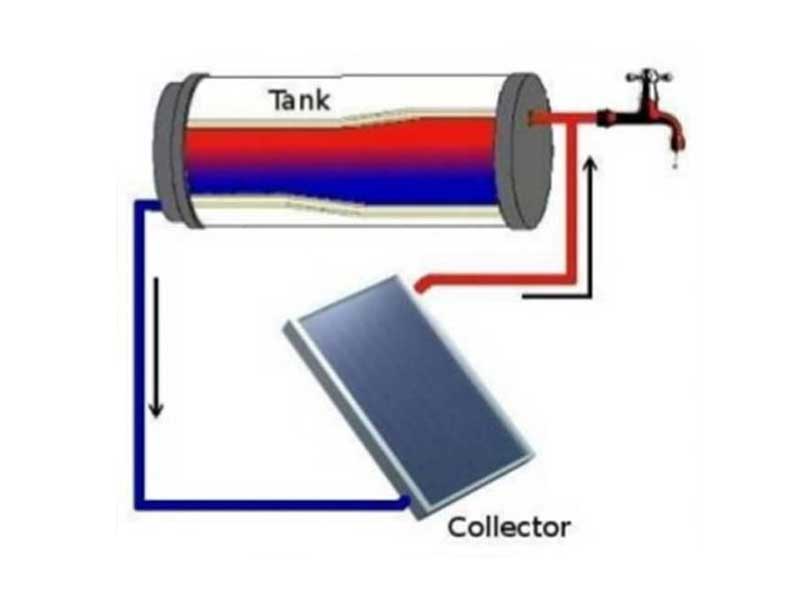


Direct solar geyser systems
Direct solar geyser systems use circulation of water in the solar collectors which directly allows the water to heat up by the sun. A storage tank is used to store the heated water or the water can also be used directly if required. Direct solar geyser systems are ideal in locations where there is not freezing climates.
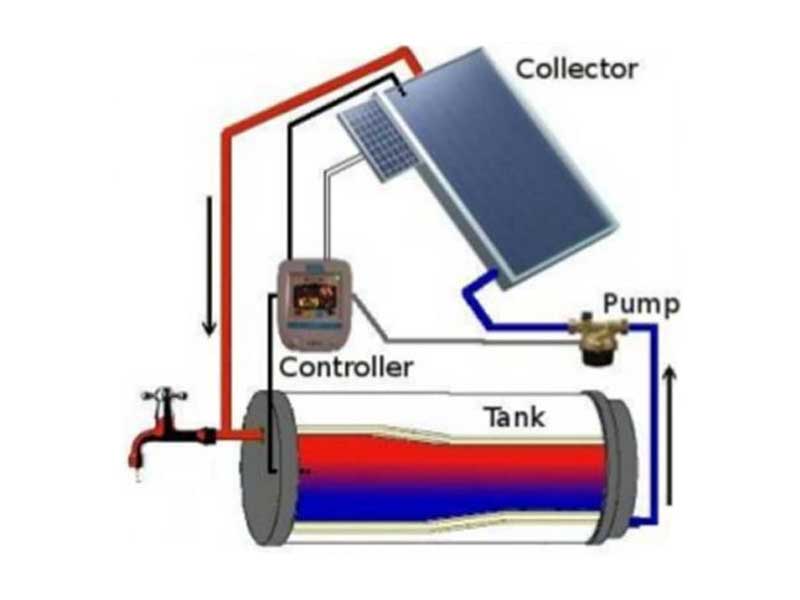


Active solar geyser systems
An active solar geyser system makes use of electric pumps, valves, and controllers to transfer water from the solar collector to a storage tank.
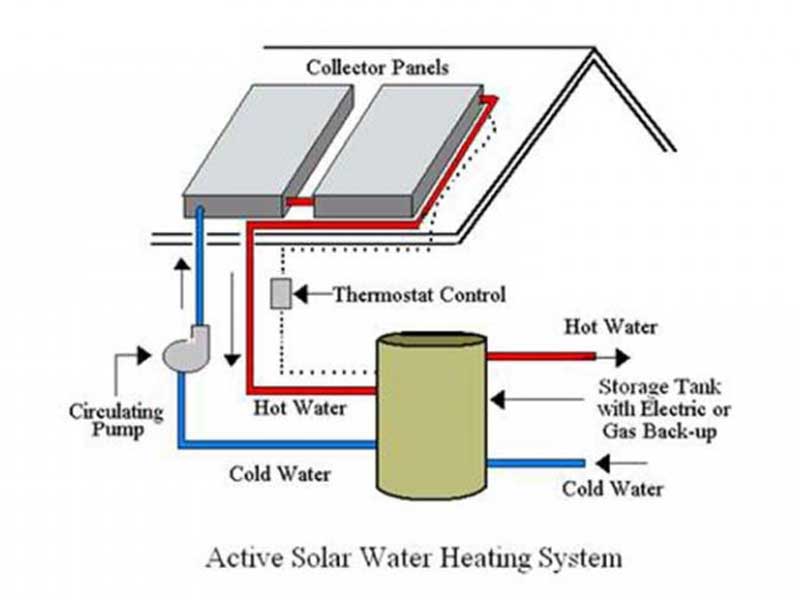


Passive solar geyser systems
Passive solar geyser systems do not require pumps for water circulation. Instead, Passive solar geyser systems make use of natural convection which allows the water to move from the solar collector to the water storage tank as the water heats up.
